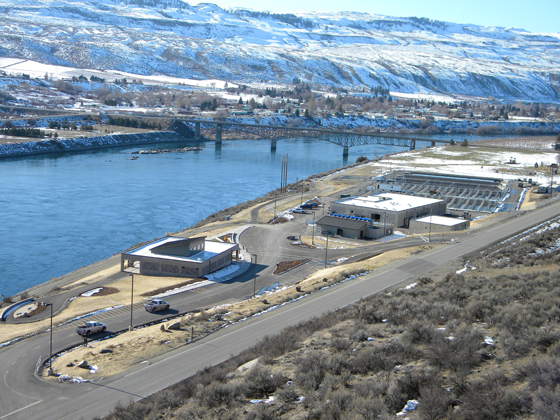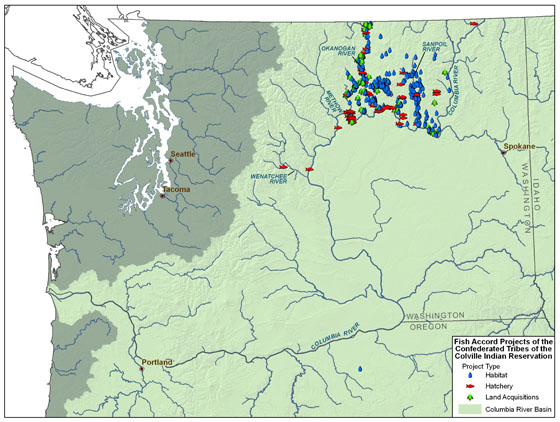
Chief Joseph Hatchery grounds; Bridgeport, Washington
On June 20, 2013, the Confederated Tribes of the Colville Indian Reservation hosted a ribbon cutting and First Salmon Ceremony to celebrate opening of the new Chief Joseph Hatchery in Bridgeport, Washington.
Read more here.
The $51 million project is funded under the Colville Tribes' Fish Accord with BPA, the Corps and Reclamation. Grant County Public Utility District contributed approximately $10 million.
The end goal is to to increase the abundance, productivity, distribution, and diversity of natural spawning populations of spring/summer/fall Chinook salmon in the Okanogan and Columbia Rivers, to help provide hatchery fish for tribal ceremonies and subsistence needs and to increase recreational fishing opportunities.
The new hatchery will be operated by the Colville Tribes, ultimately producing 2.9 million Chinook salmon per year once it is in full operation by 2015.
"The Tribes have embraced hatchery reform efforts that seek to find a balance between artificial and natural production and address the often conflicting goals of increased harvest and conservation," Keith Wolf, Chief Joseph Hatchery Science program manager.
"The Colville Tribe is in the forefront of implementation of a paradigm shift in hatchery management and . . . the challenging process of institutionalizing hatchery reform in the 21st century."
Dr. Lars E. Mobrand, senior biometrician for DJ Warren and Associates, congressionally-appointed member of the Hatchery Science Review Group.

Locations of Colville Tribes' Fish Accord projects.
Click here for larger view.
